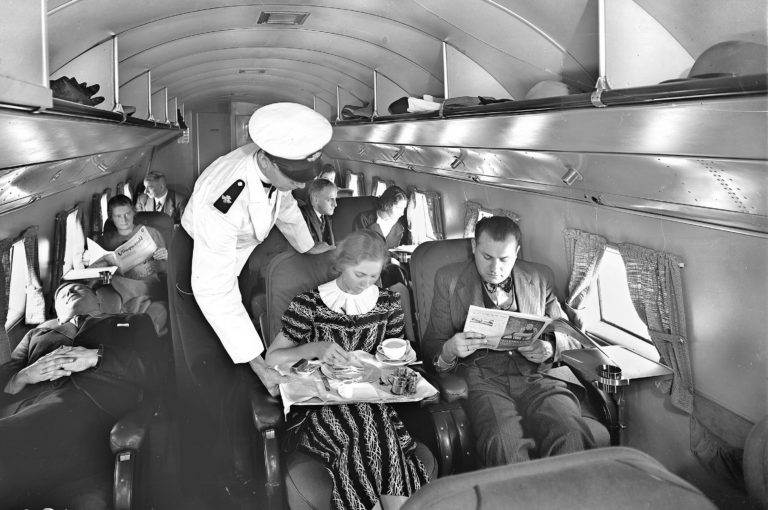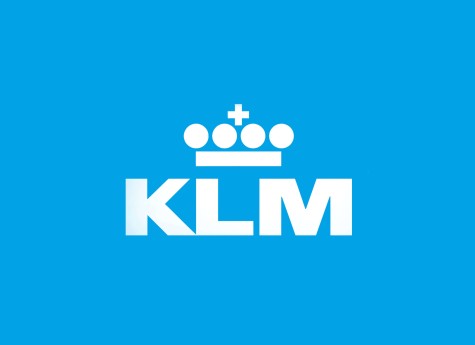Was KLM a state company when it was founded?
The story of KLM, one of the world's most important airlines:

The airline, which started flights in May 1920, made its first flight from London to Amsterdam on a chartered DeHavilland DH-16 aircraft. On its maiden flight, KLM carried two journalists and a letter from the Mayor of London.
First Passenger Office in Airline History
The flights that started regularly between London-Amsterdam routes reached a passenger capacity of 345 in a year. Today, this capacity is equal to the number of passengers carried by only one 747 aircraft, but according to the conditions of that day, this is a very difficult achievement. As the business grew, KLM began using its own Fokker aircraft, expanded its presence in Schiphol and opened a passenger office in the center of Amsterdam, the first in an airline's history.
KLM continued to work closely with Dutch aircraft manufacturer Fokker during their early years. Designed for international travel, the Fokker F.VII. It was the biggest indicator of that. This aircraft made its first 55-day flight from Amsterdam to Jakarta in October 1924, which proved groundbreaking and proved the possibilities of long-haul aviation.
In the 1930s, international service was expanded, serving Curaco and the Batavia route extended to Australia.
KLM also introduced its aircraft, which was introduced to the European market by the American manufacturer Douglas for the first time. The Fokker aircraft served the airline successfully, but the faster Douglas DC2 and DC3 aircraft provided more of an advantage.
The Second World War, which started in 1939, also gave KLM a hard time. The occupation of the Netherlands by Germany caused the service to be interrupted. However, few aircraft were used in the BOAC rotation in London.
When the war ended in 1945, KLM quickly continued on its routes to Europe and Jakarta, launching direct flights from Amsterdam to New York on its Douglas DC4 aircraft.
Growth continued with the addition of United States rotations throughout the 1950s. In addition, KLM introduced its new long-range, pressurized aircraft, the DC6, and Lockheed's “TheConstellation” and “TheElectra” aircraft.
Along with the enlargements in the route, the service style began to change. In 1958, KLM introduced its economy class for the first time. According to KLM, this was a huge success because, thanks to the low prices it offered, it was able to increase initial passenger capacity by 27 percent in the first three months of implementation.
With the end of the war, the Dutch government bought a low stake in KLM. However, control was still not in the Dutch government, which ended in 1954 with the death of long-term president of the airline, Albert Plesman. Financial difficulties caused the Dutch Government to increase its shares to 2/3 of the company, which gave KLM the status of a national company.
Transition to the Jet Age
In March 1960, KLM took delivery of its first jet-powered aircraft, the Douglas DC8, and named it after its founding President Albert Pleasman. Passenger traffic increased from 9.7 million passengers in 1980 to 16 million in 1990; In 2010, this number reached 34.1 million. In 1989, the familiar 747-400 aircraft began to enter service.
The airline continued to expand its worldwide presence through acquisitions and partnerships. In 1989, KLM acquired 20 percent of the shares of the United States company NorthwestAirlines. With the approval of the United State Department of Transportation, they began joint venture activities on flights between the USA and Europe, and in 1994 they introduced the "World Business Class" service on international routes.
The growth process continued with the acquisition of 26 percent of Kenya Airline in 1996. In 1998, KLM re-purchased shares of the Dutch State, becoming a private company once again.
In May 2004, KLM completed its merger with Air France, making a major change. Subsequently, KLM became a member of the Skyteam airline association and is among 29 member airlines.
KLM has focused strongly on sustainability, paying close attention to nature, the environment and climate, and topped the Dow Jones Sustainability Index from 2005 to 2016. Then, as early as 2007, it started promoting flights using biofuels.
It has shown how sensitive it is in this regard by pioneering the use of bio-fuels in the past years.
In 2015, KLM started using the Boeing 787-9 Dreamliener. The 787-10s began to be delivered in 2019. As a result, the 747s will be replaced by the 787 fleet, retiring by 2021.
Carrying 101.4 million passengers in 2017 with a fleet of 548 aircraft, Air France-KLM operates up to 2300 daily flights, mostly from its hubs in Paris-Charles de Gaulle and Amsterdam-Schiphol.
A commercial
KLM Tells Its 100-Year History Over Three Generations
KLM, the national airline company of the Netherlands, founded in 1919, conveys its centuries-old history through grandmother, daughter and granddaughter.
Outlining the company's evolution from 1919 to 2019, the one-minute commercial opens with a scene of a little girl dying to see KLM's classic Fokker F.II aircraft. The girl who is chasing her dreams starts working at KLM in 1934 and makes her flight with a Douglas DC-4 airplane. On the one hand, the story of the family is covered, on the other hand, the development and growth of the company is conveyed. The film, which features the grandmother and the daughter respectively, ends with the scene where the granddaughter looks at the photograph of her grandmother in the cockpit. In addition to the Fokker F.II and Douglas DC-4, the film also features Boeing 747 and Boeing 787-10 (Boeing 787 Dreamliner) aircraft. In the commercial, there are archival footage of the original planes as well as the images of the original planes on the sets. In the work carried out with historians, the smallest details were adjusted to fit the time.

